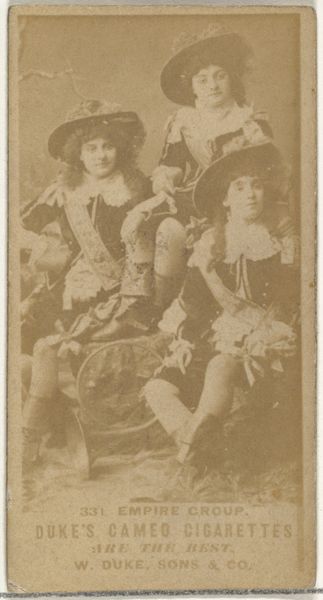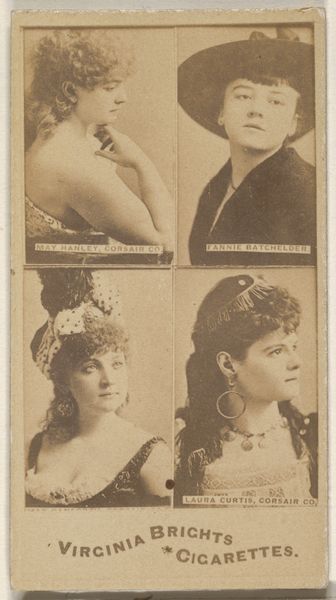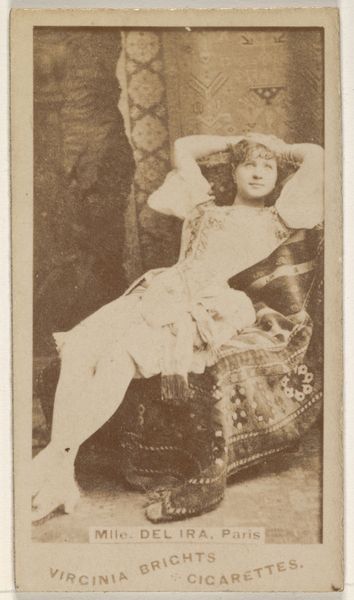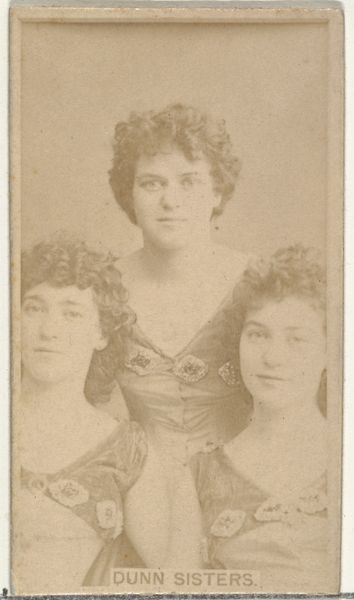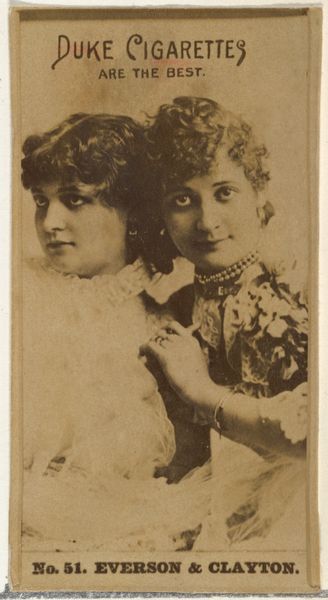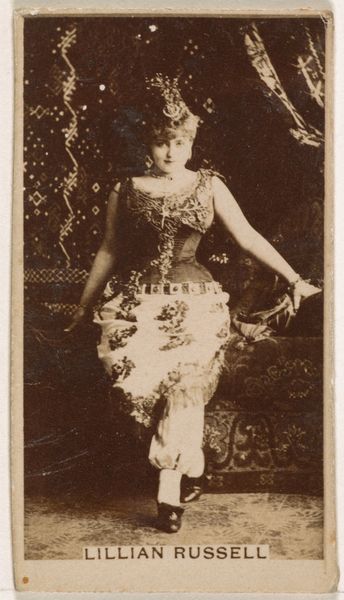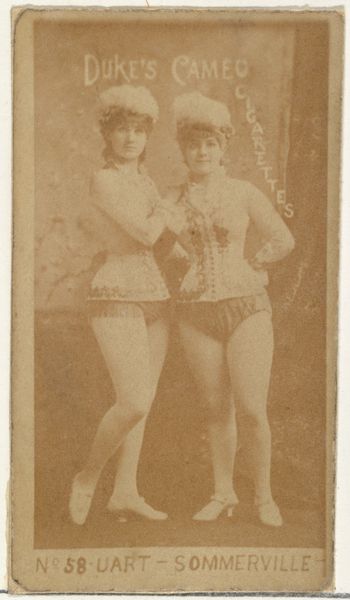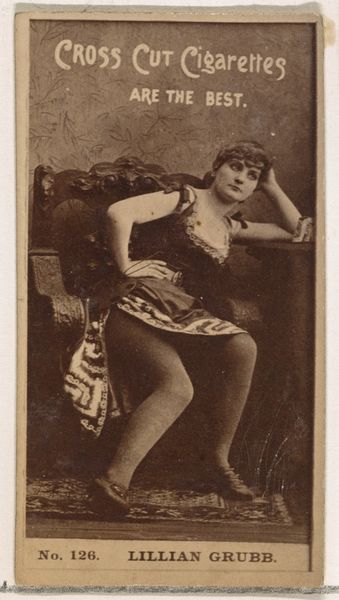
Card Number 102, Daughters of the Plow, from the Actors and Actresses series (N145-6) issued by Duke Sons & Co. to promote Duke Cigarettes 1880s
0:00
0:00
drawing, print, photography
#
portrait
#
drawing
# print
#
figuration
#
photography
#
19th century
#
genre-painting
Dimensions: Sheet: 2 11/16 × 1 3/8 in. (6.8 × 3.5 cm)
Copyright: Public Domain
Curator: What a curious image. The first thing that strikes me is this strange mix of elegance and... well, animal print. Editor: Exactly! There's something wonderfully bizarre about it. A kind of staged wildness...a touch of Victorian vaudeville crossed with a Tarzan movie. Curator: Let’s contextualize. We're looking at "Card Number 102, Daughters of the Plow," part of the Actors and Actresses series (N145-6), a promotional print created by W. Duke, Sons & Co. in the 1880s to hawk Duke Cigarettes. It resides here at The Metropolitan Museum of Art. Editor: So, it’s advertising... masquerading as...art? Are those leopard prints? Leopardesses advertising cigarettes; there's a new angle for Mad Men. The sepia tone is lovely but this composition raises so many questions about gender and labor! Curator: Indeed. The title, "Daughters of the Plow," suggests a connection to agriculture, to rural life. Yet these women appear far removed from any literal farming. We have to understand that the title serves a marketing strategy. Editor: Oh, a knowing wink? Sowing a field and sowing desire maybe? The text overlay boldly proclaims that "Duke Cigarettes ARE THE BEST." Talk about burying the lede! It does invite us to dissect this image from the vantage of a thoroughly modern skepticism of consumerism. Curator: Precisely! These actresses are embodiments of idealized femininity deployed within a capitalist framework. This form of genre painting flirts with idealized types while reinforcing prevailing stereotypes. Note their costuming and elaborate hairstyles; they don't simply appear; they perform femininity. Editor: There's a story of exploitation, then, woven into this picture of supposedly carefree femininity. As the work’s patron overtly sought increased profits via tobacco sales, shouldn't it be understood through a framework of art as capital? Is that the most we can get here: art only ever perpetuating economic paradigms? Curator: Perhaps... yet what might those initial viewers in the 1880s have been experiencing? What feelings were triggered beyond the mere push to consume? Maybe they really just believed the advert… Editor: Good point. I guess I got so caught up in it! In any case, there's so much more lurking beneath that faded print than a mere sales pitch. This humble, weird artifact makes a stronger impact once you see its cultural and philosophical possibilities!
Comments
No comments
Be the first to comment and join the conversation on the ultimate creative platform.



